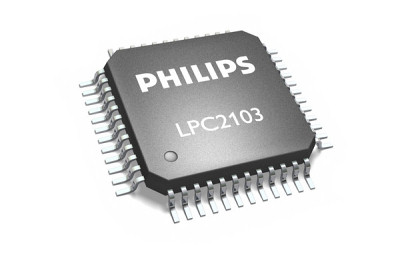Chimera Teaser (Part 2)

Here is another Chimera teaser for you.
Ever since the end of the summer, Delicon and I have been hashing out a hardware specification for this cartridge. We knew we didn't want to do audio loads. We wanted to do serial. Serial would be easier to implement. Audio loads would probably have required a more complicated programmable logic chip like what is in the Cuttle Cart. That would be too expensive. With serial, we could use a dedicated microcontroller on the cartridge which had serial built-in. Some microcontrollers have other features as well, like integrated flash memory or other peripheral support.
So we started to look at the Philips LPC range of processors. These are ARM7 variants, similar to one of the CPUs that is in the GP2X. For the technically minded, you can look up the datasheets on these.
We are currently planning to use the LPC2103.

Here is a block diagram:
Yes, we're talking about strapping a 70mhz 32-bit system-on-chip style processor onto a 1.19mhz 6507.
OK, your first reaction to this must be:
WHAT.... THE.... F**K????
My response:
In 1977, a 6507 was cheap.
In 2006, this is cheap.
By using the ARM, we are able to reduce the custom logic down to two smallish CPLDs and a few support chips.


You'll notice that the ARM has two UARTs. So games will load automatically via serial. One of the UARTs supports hardware flow control. We are planning to provide an efficient way for VCS games to use both UARTs. New kinds of games could now be possible that use the serial ports. For instance, linking consoles via the internet, or interfacing serial mice.
Another big features we want to support has another mythical name: Ouroboros. You can probably figure out what it means from this picture:

We'll also provide a lot more than 6K to work with. We're currently planning to use a 128K SRAM chip. You'll probably have 64K for game code, and 64K for Ouroboros data. That's per-load. You'd still be able to overwrite any or all of that memory with each successive random-access load.
Also, it would be a tragedy to put a chip like this on the cart and not be able to use it as a true coprocessor.
We've spent most of the last few months trying to figure out how we expect to wring the most power out of this chip without incurring a lot of extra cost.
We think we have a viable strategy now. We just have to create a proof of concept which we can hopefully demonstrate soon at a convention.
I think the end result may be something like the Atari 2600 equivalent of the Sega 32X, a platform on top of a platform. It's more than just extra memory. The processor in the cart is going to be able to do some heavy lifting. When you code for Chimera, you will be writing for two architectures at once that cooperate together, either with built-in library functions that the ARM provides, or maybe even routines custom to your game. This may be a refreshing change for hackers who thought they'd already done it all for the VCS.
If you want to just write a single-load Supercharger game, you can do that. But if you want to expand outward, the extra memory and the extra features will be there for you to play with.
With every Chimera sold, either the standalone or preloaded homebrew, we add to the total number of users who can play Supercharger games. But also, by making sure that even homebrew games that only need the core Supercharger support have full latent Chimera capability, we are also seeding the new Chimera platform. We hope that this helps encourage Supercharger homebrews in addition to Chimera homebrews that exploit some of the Chimera-specific features.
Stay tuned for more details.




6 Comments
Recommended Comments